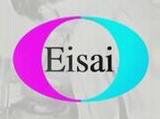In a previous study of patients with hepatitis C virus (HCV)–associated liver cirrhosis (HCV-LC), we showed that increased liver inflammation, as assessed by higher serum alanine aminotransferase (ALT), was associated with increased risk for the development of hepatocellular carcinoma (HCC). This suggested that suppression of inflammation might inhibit HCC development in HCVLC. Several agents have been suggested to possess chemopreventive potential against the development of HCC in chronic HCV-associated liver disease, including herbal medicines, such as Stronger-Neo-Minophagen C (glycyrrhizin) and Sho-saiko-to (TJ-9). Ursodiol [ursodeoxycholic acid (UDCA)], a bile acid widely used to treat cholestatic liver diseases, also possesses anti-inflammatory properties in liver disease. We hypothesized that suppression of liver inflammation, as assessed by decreases in serum ALT, might inhibit HCC occurrence in patients with HCV-LC. In this study, the preventive effect of UDCA on HCC was examined in patients with early-stage HCV-LC. One hundred two patients with HCV-LC (Child stage A) were treated with anti-inflammatory drugs, Stronger-Neo- Minophagen C, Sho-saiko-to, or UDCA, with the goal of lowering the average serum ALT level to <80 IU. If the average ALT level did not remain <80 IU after treatment with one agent, multiagent therapy was initiated. The patients were followed up for >5 years and were retrospectively subdivided into two groups: 56 UDCA users (group A) and 46 UDCA nonusers (group B). The mean F SD dosage of UDCA administered in group A was 473.7 F 183.0 mg/d. The average duration of UDCA administration in group A was 37.3 F 15.9 months over the 5-year study period. The cumulative incidence of HCC was recorded. The 5-year incidence of HCC in group A was 17.9% (10 of 56) and was significantly lower than that in group B (39.1%, 18 of 46; P = 0.025). The risk for HCC incidence, calculated by a logistic regression model, showed that the administration of UDCA significantly decreased hepatocarcinogenesis (P = 0.036). The herbal medicines used were comparable in dosage and treatment duration in the UDCA and non-UDCA groups. In conclusion, UDCA might prevent HCC development in HCV-LC. Interestingly, because the serum ALT trends over time were nearly the same in both groups, the chemopreventive effectiveness of UDCA was not accompanied by greater reductions in ALT compared with the UDCA nonusers. (Cancer Epidemiol Biomarkers Prev 2005;14(1):164–9)
 更多
更多
- Severe autoimmune hemolytic anemia in a patient with chronic hepatitis C
- APASL2006中文版
- PROSPECTIVE ASSESSMENT OF THE INCIDENCE OF INFECTIONS DURING PEGYLATED INTERFERO
- A Long-Term Glycyrrhizin Injection Therapy Reduces Hepatocellular Carcinogenesis
- Glycyrrhizin in Chronic Hepatitis C Patients
- Therapeutic effects of stronger neo-minophagen C at different doses on chronic
- Therapeutic effects of Stronger Neo-Minophagen C (SNMC) in patients with chronic
- Randomized clinical trial with SNMC in Chin-BE Wang-ok
- The long term efficacy of glycyrrhizin in chronic hepatitis C patients
- Hepatitis C viral infection
















